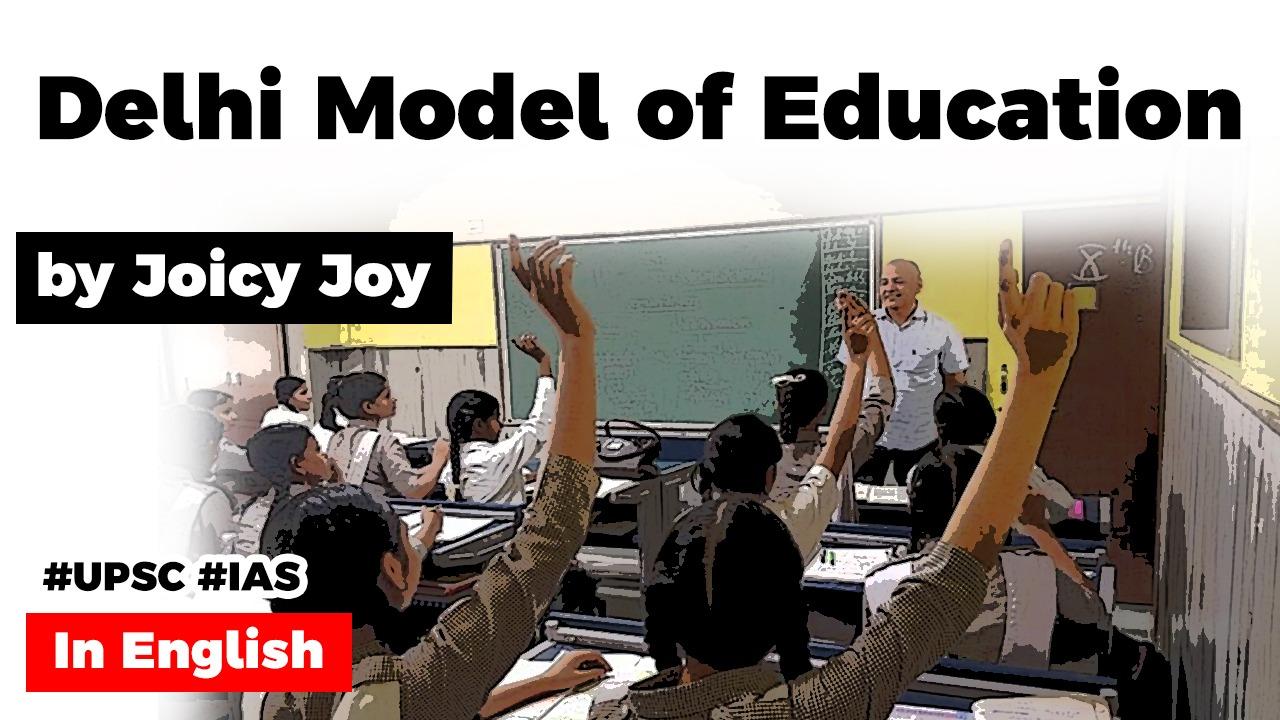Table of Contents
CURRENT AFFAIR
- The Delhi model of education has caught the attention of people in Delhi and beyond in the last five years.
REASONS FOR SUCCESS
- For too long, there have been two kinds of education models in the country: one for the classes and another for the masses.
- The Delhi government sought to bridge this
- Its approach stems from the belief that quality education is a necessity, not a luxury.
- It is supported by nearly 25% of the State
KEY COMPONENTS OF THE MODEL
- Transformation of school infrastructure – Dilapidated school buildings that lack basic facilities indicate the apathy of the
- It will also lower the teachers’ motivation and the students’ enthusiasm.
- So, the government of Delhi sought to change this by building new, aesthetically designed classrooms equipped with high facilities.
- Training of teachers and principals – Many opportunities were given to teachers for their professional growth.
- They had been exposed to new education models of excellence in India and abroad and, also had been given leadership training.
- This enabled Delhi to gradually move away from a uniform training model for all to learning from the best practices in India and abroad.
- Engaging with community by reconstituting SMC – The annual budget of each school management committees (SMC) is ₹5-7 lakh.
- The SMCs can spend this money on any material or activity, such as even hiring teachers on a short-term basis.
- Regular dialogue between teachers and parents was initiated through mega parent-teacher
- Guidelines are provided on how to engage with
- Curricular reforms in teaching learning – Special initiatives to ensure that all children learn to read, write and do basic maths was made part of regular teaching learning activities in schools.
- A ‘happiness curriculum’ was introduced for all children between nursery and Class 8 for their emotional well-being.
- An ‘entrepreneurship mindset curriculum’ was introduced to develop the problem-solving and critical thinking abilities of Class 9 to 12 children.
- No fee increase in private schools recently – In the past, almost all the schools increased their fee 8-15% annually.
- The Delhi government ensured that any fee hike proposal was examined by authorized chartered accountants.
- Thus, for 2 years no school was allowed to raise its fee.
Agenda 2.0
- Manish Sisodia, the leader of the Delhi education models said that there will be a shift in focus now.
- It will shift from “having built the foundation of education” to “education as foundation”.
AGENDA 2.0’S KEY AREAS OF REFORM
- Reviewing the Classes 1 to 8 syllabus – This review will emphasise the foundational learning skills, the ‘happiness curriculum’ and the ‘deshbhakti’ curriculum.
- Apart from that, early childhood care and education will be deepened further through
- There will be nurseries in all govt schools.
- Setting up a Delhi Education Board – This will promote a learning that encourages critical thinking, problem solving and application of knowledge among children.
- This will prepare them to tackle the challenges of the 21st century with an entrepreneurial
- For those who have graduated from Delhi schools in the recent past, programmes will be initiated to raise their employability opportunities.
- Creating specialised schools – These schools will be created in each of the 29 zones of Delhi to nurture the aptitude and talent of children in the areas of science and technology, literature and language, etc.
- Delhi has acknowledged education as a top agenda of governance now.
- So, the natural expectation from it would be to ensure that all children get education that passes the test of quality, opportunity and equity.
ASER REPORT 2020
- Only 16% of children in Class 1 can read the text at the prescribed level, while almost 40% cannot even recognise letters.
- Of 6 year olds in Class 1, nearly 42% of those in private schools could read words in comparison to only 19% from government schools.
- More than a quarter of Class 1 students in government schools are only 4 or 5 years old, younger than the recommended age.
Latest Burning Issues | Free PDF

























 WhatsApp
WhatsApp